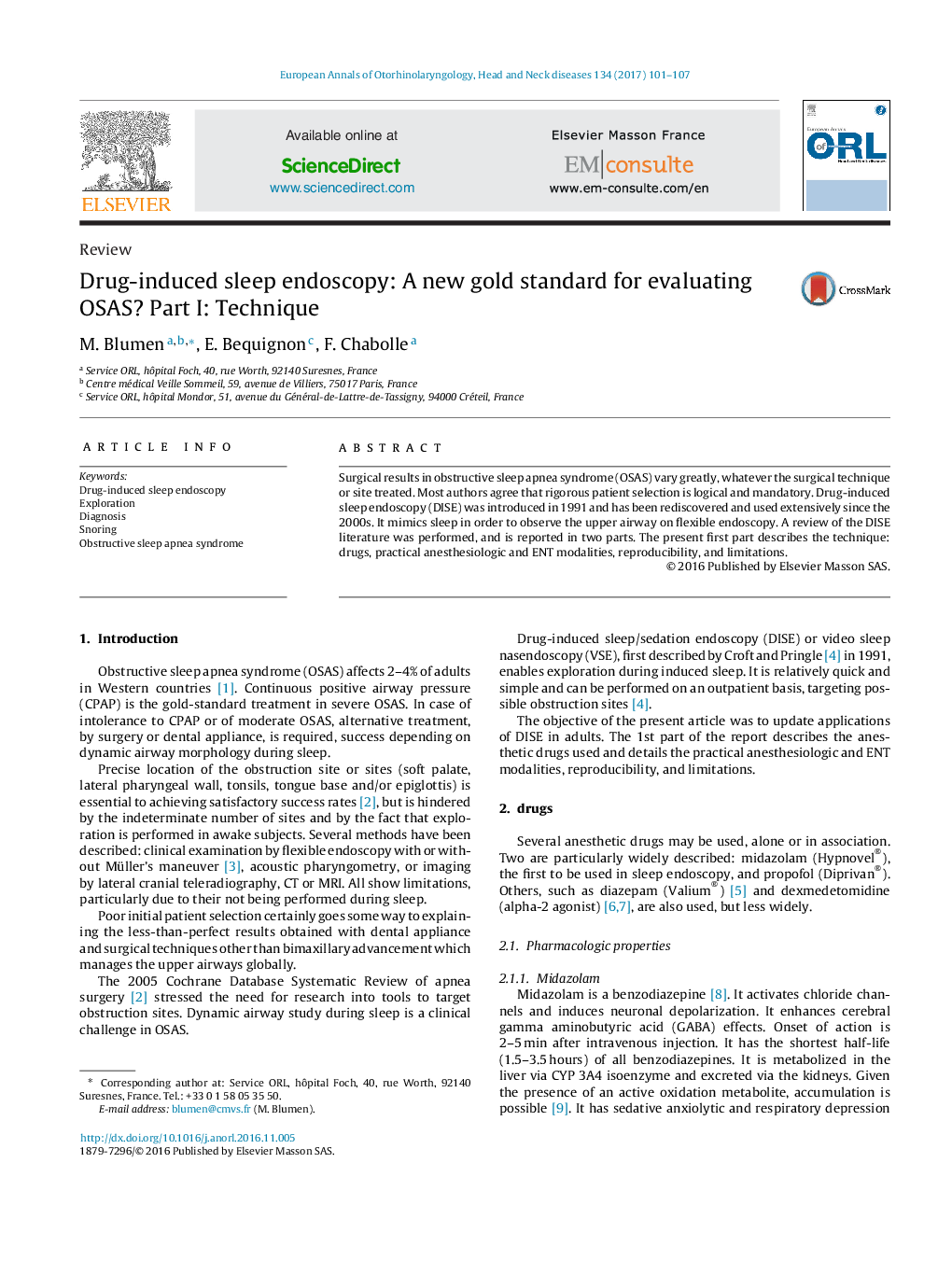| Article ID | Journal | Published Year | Pages | File Type |
|---|---|---|---|---|
| 5714233 | European Annals of Otorhinolaryngology, Head and Neck Diseases | 2017 | 7 Pages |
Abstract
Surgical results in obstructive sleep apnea syndrome (OSAS) vary greatly, whatever the surgical technique or site treated. Most authors agree that rigorous patient selection is logical and mandatory. Drug-induced sleep endoscopy (DISE) was introduced in 1991 and has been rediscovered and used extensively since the 2000s. It mimics sleep in order to observe the upper airway on flexible endoscopy. A review of the DISE literature was performed, and is reported in two parts. The present first part describes the technique: drugs, practical anesthesiologic and ENT modalities, reproducibility, and limitations.
Related Topics
Health Sciences
Medicine and Dentistry
Otorhinolaryngology and Facial Plastic Surgery
Authors
M. Blumen, E. Bequignon, F. Chabolle,
